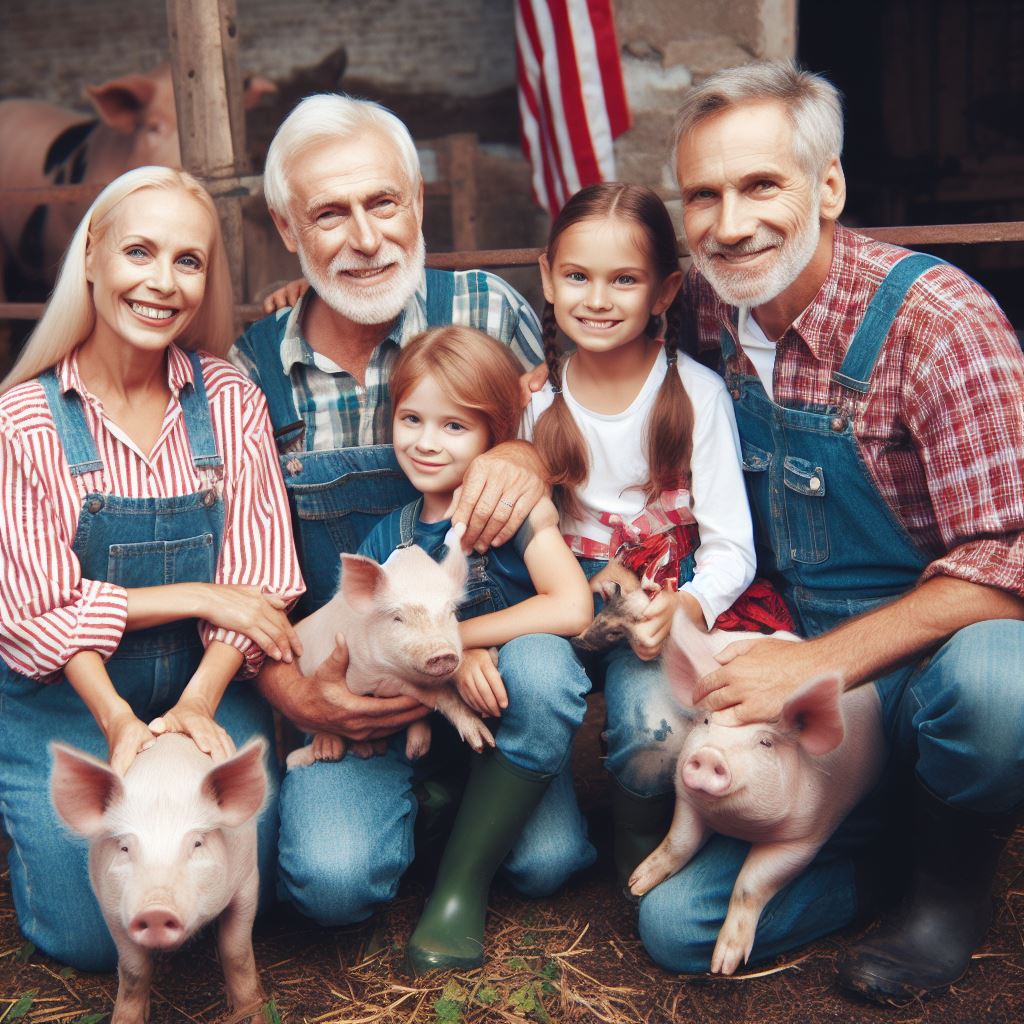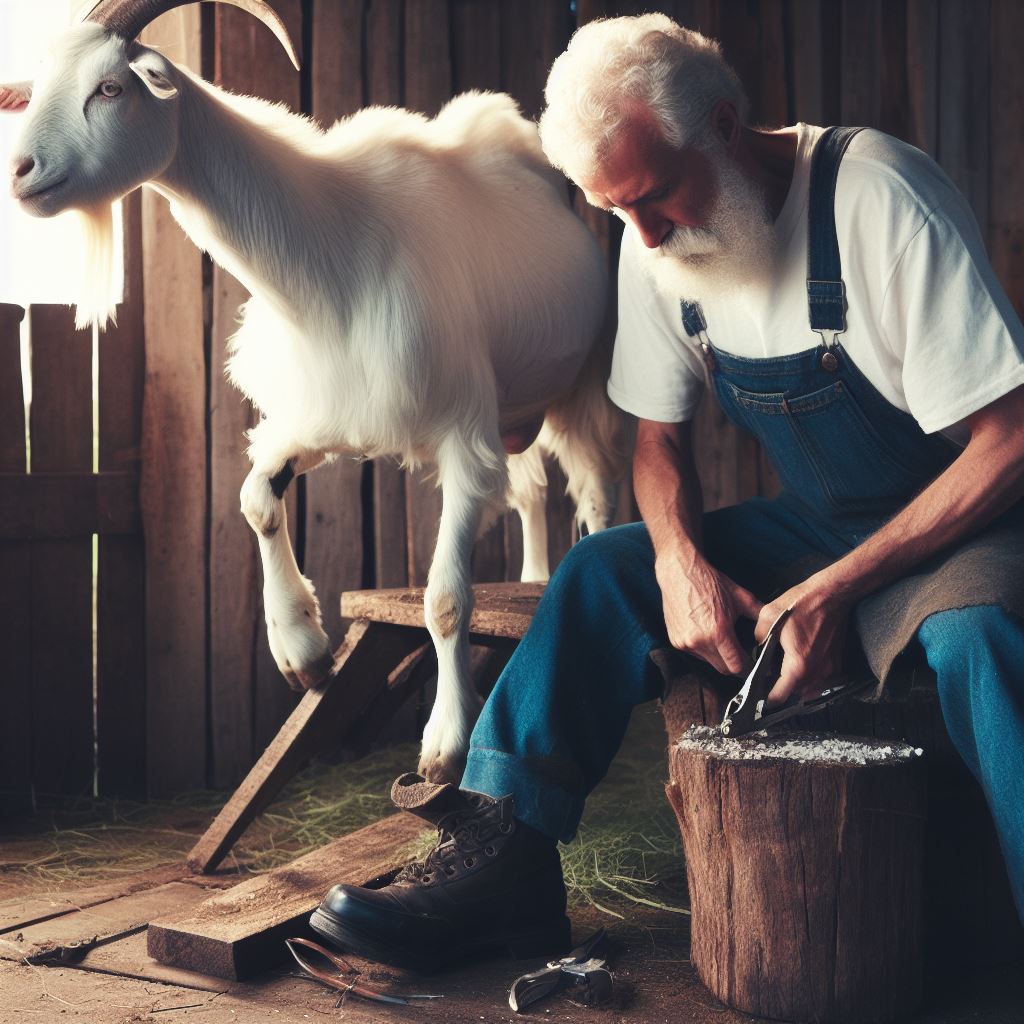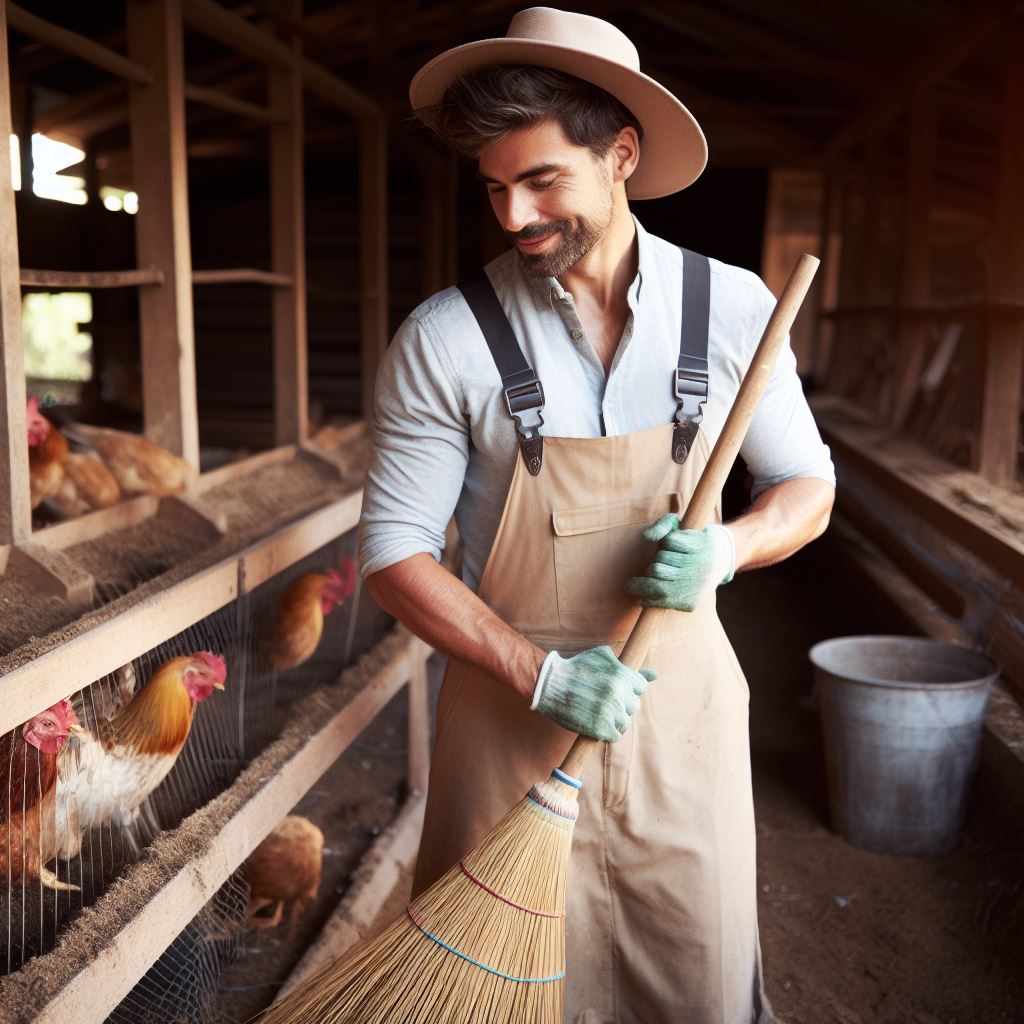Introduction
Pig farming is a crucial aspect of agriculture as it provides numerous benefits to farmers.
Raising pigs can be highly profitable and rewarding for beginners in the farming industry.
Importance of Pig Farming in Agriculture
Pig farming plays a vital role in the agricultural sector, contributing to food security and economic growth.
Pigs are excellent converters of feed into high-quality protein, making them a valuable source of meat.
Benefits of Raising Pigs
- Profitability: Raising pigs can be a lucrative venture, as pork consumption is in high demand globally. The market for pork products and by-products is vast, ensuring a profitable return on investment.
- Efficient Feed Conversion: Pigs have a remarkable ability to convert feed into meat efficiently. This characteristic makes them an ideal choice for maximizing feed resources and reducing costs.
- Manure Management: Pig manure is a valuable organic fertilizer. It contains essential nutrients that improve soil fertility, making it an eco-friendly and sustainable method of waste management.
- Diversification: Pig farming allows farmers to diversify their agricultural activities, creating additional income streams. Pigs can be raised alongside other livestock, such as chickens or cattle, providing multiple revenue sources.
- Small Space Requirement: Pigs can be raised in confined spaces, making it feasible for farmers with limited land availability. This advantage enables individuals in urban or peri-urban areas to participate in pig farming.
In short, pig farming is an essential component of agriculture, offering a range of benefits such as profitability, efficient feed conversion, and diversification.
Raising pigs can be a rewarding venture for beginners in the farming industry, contributing to agricultural development and economic stability.
Choosing the right breed
Choosing the right breed of pigs is crucial for beginners entering the world of pig farming.
There are several factors to consider when selecting a breed, such as the purpose of your farm, the climate in your area, the availability of resources, and the market demand for specific breeds.
Here is a list of considerations to keep in mind when choosing a pig breed for beginners:
- Purpose: Determine the purpose of your pig farming venture. Are you raising pigs for meat, breeding, or show? Different breeds are suited for specific purposes, so define your goals clearly.
- Climate: Take into account the prevailing climate in your area. Some pig breeds are better suited for cold climates, while others thrive in hot weather conditions. Choose a breed that can adapt well to your local climate.
- Availability of Resources: Assess the availability of resources such as feed, water, and housing materials. Some breeds can be more demanding in terms of their dietary needs and housing requirements. Ensure that the resources necessary for the chosen breed are easily accessible.
- Market Demand: Research the market demand for different pig breeds. Some breeds, like the Yorkshire or the Duroc, are popular in the meat industry due to their excellent meat quality. Knowing the market demand will help you make informed decisions about your choices.
Factors to Consider for Each Breed
- Hampshire: Known for their meat quality, Hampshire pigs thrive in various climates and are relatively easy to raise. They have a black body with a white belt around the front legs.
- Berkshire: Berkshire pigs are highly regarded for their exceptional meat quality and marbling. They have a black body with white points on their nose, legs, and tail. They adapt well to different climates.
- Duroc: Duroc pigs are known for their excellent meat quality and are popular in the meat industry. They have a reddish-brown color and are adaptable to different climates.
- Yorkshire: Yorkshire pigs are widely recognized for their high growth rate and lean meat. They have a white body with erect ears and are adaptable to various climates.
- Tamworth: Tamworth pigs are known for their hardiness and ability to forage. They have a red-ginger color and are well-suited for outdoor or pasture-based systems.
Remember to consider other factors such as the temperament of the breed, the space required for each pig, and the breeding capabilities if you plan to expand your herd in the future.
In essence, selecting the right breed of pigs for beginners involves considering multiple factors such as purpose, climate, availability of resources, and market demand.
Research each breed thoroughly to understand its characteristics and potential challenges.
Consult experienced farmers, visit local farms, and attend agricultural fairs to gain practical insights.
With careful consideration, you can choose a pig breed that suits your goals and ensures a successful start to your pig farming journey. Good luck!
Read: Automated Tractors: The Future of Ploughing
Transform Your Agribusiness
Unlock your farm's potential with expert advice tailored to your needs. Get actionable steps that drive real results.
Get StartedSetting up the pig farm
Setting up a pig farm requires careful planning and consideration of various factors. Here are some key steps to follow:
1. A suitable location for pig farming
- Choose a location with easy access to transportation and markets for selling pigs.
- Ensure availability of good quality water and suitable soil for waste management.
- Consider the distance from residential areas to minimize odor and noise disturbances.
2. Housing requirements for pigs
- Construct sturdy and spacious pig pens or barns to provide adequate space for the pigs.
- Use strong fencing to ensure the pigs’ safety and prevent them from escaping.
- Install proper flooring, such as concrete, for easy cleaning and prevention of diseases.
3. Ensuring proper ventilation and waste management
- Install fans or ventilation systems to maintain a comfortable temperature for the pigs.
- Provide windows or openings to allow natural light and fresh air into the pig housing.
- Implement a waste management system to handle pig manure properly, minimizing environmental impact.
Proper planning and design of the pig farm infrastructure is crucial for the well-being and productivity of the pigs.
Here are some additional considerations to keep in mind:
- Adequate space: Each pig requires enough space to move comfortably, lie down, and access feed and water. Provide at least 16-20 square feet per pig.
- Separation of pigs: Group pigs according to their age, size, and gender to prevent aggression and ensure proper growth and development.
- Bedding material: Use suitable bedding material, such as straw or sawdust, to provide comfort and absorb moisture in the pig housing.
- Feed and water supply: Install automatic feeders and waterers to ensure a constant supply of clean, fresh feed and water for the pigs.
- Disease prevention: Practice strict biosecurity measures, such as regular disinfection and vaccination, to prevent the spread of diseases among the pigs.
- Lighting: Provide adequate lighting in the pig housing to prevent stress and promote normal growth and behavior.
- Safety measures: Install fire alarms, emergency exits, and proper lighting to ensure the safety of both pigs and workers.
Remember, setting up a pig farm requires hard work, dedication, and continuous learning.
Regularly educate yourself about pig farming practices, attend workshops, and seek guidance from experienced pig farmers.
By following these basics, you can lay a strong foundation for a successful and profitable pig farming venture.
Read: Agri Solar Panels: Powering Farms Sustainably
Feeding and Nutrition
Feeding and nutrition play a crucial role in pig farming. Understanding the nutritional needs of pigs is essential for their health and growth.
Understanding the Nutritional Needs of Pigs
To provide proper nutrition to pigs, it is vital to comprehend their nutritional requirements.
Pigs require a balanced diet that includes proteins, carbohydrates, fats, vitamins, and minerals.
Pigs primarily need proteins for muscle development and growth. High-quality protein sources such as soybean meal, fishmeal, and canola meal are excellent options.
Carbohydrates provide energy to pigs. Grains like corn, wheat, and barley are commonly used as carbohydrate sources in pig feed.
Fats are essential for energy and vitamin absorption. Adding fat sources like vegetable oil or animal fat in pigs’ diet can meet their fat requirements.
Vitamins and minerals are crucial for pig health. Vitamin supplements such as vitamin A, D, and E, along with minerals like calcium, phosphorus, and iron, should be included in their diet.
Types of Pig Feed and Proper Feeding Schedule
There are different types of pig feed available in the market, including complete feeds, concentrates, and supplements.
Complete feeds are nutritionally balanced and can be fed to pigs as their sole source of nutrition.
Concentrates are pellets or mashes that contain a high concentration of specific ingredients.
They need to be mixed with other feed ingredients to create a balanced diet.
Supplements are specific nutrients that can be added to the pig’s diet to meet any nutritional deficiencies.
Common supplements include mineral blocks, vitamin premixes, and probiotics.
Establishing a proper feeding schedule is crucial in pig farming.
Pigs should be fed two to three times a day, with a consistent and regular feeding time.
This helps maintain their digestive health and prevents overeating.
Water Requirements for Pigs
Adequate access to clean and fresh water is essential for pigs. Pigs need water to maintain their bodily functions, regulate body temperature, and aid in digestion.
Showcase Your Farming Business
Publish your professional farming services profile on our blog for a one-time fee of $200 and reach a dedicated audience of farmers and agribusiness owners.
Publish Your ProfilePigs can consume a significant amount of water daily.
It is important to ensure a constant supply of clean water in easily accessible water troughs or automatic waterers.
Regularly checking water sources and maintaining proper hygiene is crucial to prevent the spread of diseases and ensure pigs stay adequately hydrated.
Basically, understanding the nutritional needs of pigs, providing a balanced diet, and managing their water requirements are crucial aspects of pig farming.
Proper feeding and nutrition contribute to the health, growth, and overall success of a pig farming venture.
Read: Sheep Flock Care: Top Strategies & Insights
Health and disease management
In pig farming, proactive health management is vital, encompassing regular health checks and preventive measures to ensure:
- Early detection of illness for successful treatment.
- Ongoing monitoring of overall pig well-being and thriving.
Key preventive measures include:
- Vaccination against infectious diseases like swine fever and respiratory ailments.
- Maintaining a clean environment and practicing biosecurity measures.
- Implementing good hygiene when handling pigs.
Common pig diseases, like Porcine Reproductive and Respiratory Syndrome (PRRS) and African Swine Fever (ASF), demand:
- Strict biosecurity measures.
- Vaccination programs for disease prevention.
Parasitic infections necessitate regular deworming to control internal and external parasites, preventing:
- Poor growth.
- Weight loss.
- Skin irritations.
To prevent respiratory diseases, ensure:
- Proper ventilation.
- Clean and dry bedding.
- Appropriate nutrition.
Gastrointestinal disorders, such as diarrhea, are managed through:
- Proper hygiene and nutrition.
- Regular monitoring.
Maintaining good health and effective disease management are fundamental for successful and profitable pig farming.
Read: 5 Essential Tips for Healthy Cattle Rearing
Breeding and Reproduction
Breeding pigs is an essential aspect of pig farming. Understanding the basics of pig breeding is crucial for beginners to ensure a successful reproduction process.
In this section, we will explore the different types of breeding systems and learn how to effectively manage the breeding process.
Basics of Pig Breeding
Pig breeding involves the mating of a male and female pig to produce offspring.
It is important to select healthy and genetically superior pigs for breeding to maintain the quality of the pig herd.
Breeding age for sows is between 8 to 18 months, while boars can start breeding as early as 6 to 8 months.
Types of Breeding Systems
- Natural Mating: This method involves allowing the boar to mate naturally with the sow. It requires proper management to ensure successful mating.
- Artificial Insemination (AI): AI is a technique where semen from a selected boar is manually transferred into the reproductive tract of the sow. It offers several advantages, such as allowing the use of superior genetics and avoiding the need for keeping a boar on the farm.
- Hand Mating: In this system, the boar and sow are brought together in a controlled environment for mating under supervision.
- Pen Mating: Pen mating involves maintaining a group of sows with a single boar in a specific pen. The boar should be physically fit and able to serve all the sows.
How to Manage the Breeding Process
- Estrus Detection: It is crucial to identify when the sow is in heat or estrus. Signs of estrus include swollen vulva, increased vocalization, restlessness, and a standing reflex when pressure is applied on the back.
- Heat Stress Management: Proper ventilation and access to cool water are essential during hot weather to prevent heat stress, which can negatively impact the breeding process.
- Boar Management: Regular health check-ups of boars are necessary to ensure their fitness for mating. Choosing a boar with good libido and semen quality is vital for successful breeding.
- Synchronization Techniques: Synchronization methods can be used to control the timing of estrus in multiple sows, allowing for more efficient breeding and farrowing schedules.
- Pregnancy Diagnosis: After successful mating, it is crucial to diagnose pregnancy in the sows. Techniques such as ultrasound or palpation can be used to confirm pregnancy.
- Proper Nutrition: Pregnant sows require a balanced diet to support healthy growth and development of the fetus. Adequate nutrition during pregnancy is vital to ensure the birth of healthy piglets.
- Farrowing Preparation: Preparing the farrowing area with clean bedding, proper heat source, and adequate space is essential for the sow’s comfort and the well-being of the newborn piglets.
- Record Keeping: Maintaining accurate records of each breeding event, including dates, boar used, and results, allows for efficient management and future planning.
Breeding and reproduction are fundamental to the success of any pig farming operation.
By understanding the basics of pig breeding, selecting suitable breeding systems, and effectively managing the breeding process, beginners can ensure the growth and profitability of their pig farm.
Remember, proper care and attention to each step of the breeding process will contribute to the overall success of your pig farming venture.
Read: Hydroponics: Soil-Free Farming Tech Trends
Piglet Care and Management
1. Responsibilities during farrowing
- Ensure a clean and comfortable environment for the sow to give birth.
- Monitor the sow for signs of labor and assist if necessary.
- Provide adequate nutrition and fresh water to the sow during the farrowing process.
2. Handling and socializing piglets
- Handle piglets gently and frequently to help them become more comfortable with human interaction.
- Socialize piglets by exposing them to other pigs in a controlled environment.
- Gradually introduce solid foods to piglets alongside their mother’s milk.
3. Weaning and transitioning piglets to solid food
- Start the weaning process at around 3 to 4 weeks of age.
- Offer piglets a special milk replacer or starter feed to encourage them to eat solid food.
- Monitor the piglets’ weight and adjust their diet accordingly to ensure healthy growth.
Responsibilities during farrowing
When a sow is about to give birth, it is crucial to provide her with a clean and comfortable environment.
Prepare a farrowing pen for the sow by removing any debris and providing a soft bedding material such as straw.
This will help create a warm and cozy atmosphere for her and her piglets.
Monitor the sow closely for signs of labor. Signs can include restlessness, nesting behavior, and mucous discharge.
If the sow is experiencing difficulties during farrowing, it may be necessary to provide additional assistance.
This can include gently pulling on piglets to help them out or contacting a veterinarian for guidance.
During the farrowing process, it’s important to ensure the sow has access to fresh water and high-quality nutrition.
Providing a balanced diet will help promote healthy milk production and support the sow’s overall well-being during this demanding time.
Handling and socializing piglets
To ensure piglets become comfortable with human interaction, it is recommended to handle them gently and frequently.
This can be done by picking them up and holding them close to your body.
Gradually increase the duration of handling sessions to help piglets become accustomed to human touch.
In addition to handling, socialization with other pigs is crucial for piglet development.
This can be done by creating controlled environments where piglets can interact with each other.
It helps them learn social skills and allows for the establishment of a pecking order.
Weaning and transitioning piglets to solid food
Weaning is the process of transitioning piglets from their mother’s milk to solid food. It usually starts at around 3 to 4 weeks of age.
During this time, piglets should have access to a special milk replacer or starter feed. This diet provides the necessary nutrients for their growth and development.
Monitoring piglets’ weight is important during the weaning process. If piglets are not gaining weight adequately, adjustments to their diet may be necessary.
Showcase Your Farming Business
Publish your professional farming services profile on our blog for a one-time fee of $200 and reach a dedicated audience of farmers and agribusiness owners.
Publish Your ProfileGradually reduce milk intake while increasing solid food portions to encourage piglets to eat independently.
This gradual transition helps the piglets adjust to solid food more easily.
In fact, piglet care and management play a crucial role in ensuring healthy and thriving piglets.
By providing a clean and comfortable farrowing environment, handling and socializing piglets, and properly weaning them onto solid food, pig farmers can set their piglets up for success.

Growth and market readiness
In pig farming, it is important to understand the growth and market readiness of the pigs.
Monitoring pig growth and weight gain is crucial to ensure they are healthy and ready for the market.
There is an optimal time for marketing pigs, which should be based on their size and weight.
Additionally, understanding market demands and trends is essential to maximize profits and meet consumer preferences.
- Monitoring pig growth and weight gain: Pig farmers need to consistently monitor the growth and weight gain of their pigs. This involves regularly measuring and recording their weights to track their progress.
By doing so, farmers can ensure that the pigs are growing at a healthy rate and meeting the desired market standards. - Optimal time for marketing pigs: Knowing the optimal time to market pigs is crucial for maximizing profitability. Pigs should be marketed when they reach the right size and weight for the market.
This timing ensures that they have achieved their desired fat content and are suitable for consumer preferences. The market standards and requirements should be taken into consideration when deciding the optimal time for marketing pigs. - Understanding market demands and trends: To be successful in pig farming, it is essential to stay updated with market demands and trends. Farmers should research and analyze consumer preferences to understand what types of pig products are currently in demand. This includes identifying popular cuts of meat, organic or free-range options, and any specific dietary requirements.
By understanding market demands, farmers can make informed decisions about their production practices and target specific markets to maximize their profits.
Market demands and trends
The demand for pig products can vary based on factors such as seasonality, cultural preferences, and dietary trends.
For example, during festive seasons or holidays, there may be a higher demand for pork products.
Similarly, some consumers may prefer organic or antibiotic-free pork, while others may be interested in specialty products like cured meats or sausages.
Keeping up with these demands and trends can help pig farmers cater to specific markets and increase their sales.
Market research and analysis
To understand market demands and trends, pig farmers should conduct market research and analysis.
This can be done through surveys, focus groups, or by studying market reports and industry publications.
By gathering information on consumer preferences, farmers can adapt their production practices and marketing strategies to meet the market demands.
Meeting market demands
Once market demands and trends have been identified, pig farmers can adjust their farming practices accordingly.
This may include focusing on specific breeds or genetics that are preferred by consumers, adapting housing and feeding practices to produce desired meat quality, or even partnering with local processors or retailers who cater to specific market niches.
By meeting market demands, farmers can increase their chances of success and profitability.
Generally, monitoring pig growth and weight gain, understanding the optimal time for marketing pigs, and staying updated with market demands and trends are crucial aspects of pig farming.
By actively monitoring and adjusting production practices based on market needs, farmers can maximize their profits and meet consumer preferences.
Read: Vertical Farming: The Rise of Urban Agriculture
Financial Considerations
Cost Analysis of Starting a Pig Farm
- Land and Infrastructure: The cost of purchasing suitable land and building pig pens, feeding areas, and other necessary infrastructure.
- Breeding Stock: The price of acquiring high-quality breeding pigs, including boars and sows, to start the farm.
- Feed and Nutrition: The ongoing expenses of providing nutritious feed, including grains, vitamins, and minerals, to ensure the health and growth of the pigs.
- Veterinary Care: The cost of regular check-ups, vaccinations, and treatments to maintain the pigs’ overall well-being.
- Equipment and Supplies: The investment in pig farming tools and equipment, such as feeding troughs, waterers, and handling facilities.
- Labor Expenses: The wages or salaries of the workers responsible for performing daily tasks, including feeding, cleaning, and monitoring the pigs.
- Marketing and Promotion: The expenses associated with advertising, branding, and promoting the pig farm’s products to attract customers and increase sales.
- Utilities and Maintenance: The ongoing costs of electricity, water, and general maintenance to keep the farm running smoothly.
Projected Income and Expenses
- Pork Sales: The expected revenue generated from selling live pigs or processed pork products to consumers, butcher shops, restaurants, or wholesalers.
- Breeding Stock Sales: The potential income from selling surplus breeding stock to other pig farmers or individuals interested in starting their own pig farms.
- Piglet Sales: The revenue generated from selling piglets to farmers interested in raising them for pork or breeding purposes.
- Feed and Supplies Expenses: The estimated costs of purchasing feed, supplements, and other supplies required to sustain the pigs.
- Veterinary Expenses: The projected expenses for routine health check-ups, vaccinations, medications, and emergency veterinary care.
- Marketing Expenses: The anticipated costs associated with advertising, packaging, and promoting the farm’s pork products.
- Labor Costs: The wages or salaries of the farm workers involved in daily farm operations, including feeding, cleaning, and managing the pigs.
- Overhead Costs: The miscellaneous expenses, such as insurance, licenses, taxes, and loan payments, necessary for the farm’s operation.
Long-Term Profitability and Sustainability
- Market Demand and Pricing: Analyzing the current and future market demand for pork products and adjusting pricing strategies accordingly to maximize profitability.
- Cost Management: Continuously monitoring and optimizing expenses, such as feed and labor costs, to ensure efficient resource allocation without compromising pig health and product quality.
- Managing Pig Reproduction: Implementing effective breeding programs to maximize the number of healthy piglets produced, thereby increasing potential revenue from piglet sales.
- Diversification and Value-Added Products: Exploring opportunities to diversify the farm’s income streams by venturing into value-added products like smoked bacon, sausages, or dried pork.
- Health and Biosecurity: Maintaining strict biosecurity measures to prevent disease outbreaks, reducing the risk of potential losses and costly treatments.
- Continuous Learning: Regularly staying informed about advancements in pig farming techniques, genetics, nutrition, and management practices to enhance productivity and profitability.
- Farm Expansion and Scaling: Evaluating the feasibility of expanding the farm’s capacity based on market demand and financial capabilities.
- Risk Management: Developing contingency plans to mitigate potential risks, such as natural disasters, market fluctuations, or disease outbreaks, that could affect the farm’s profitability.
Creating a comprehensive financial plan and regularly reviewing and adjusting it based on market conditions and the farm’s performance is crucial for the long-term profitability and sustainability of a pig farm.
By understanding and carefully managing the financial aspects, beginner pig farmers can increase their chances of success in this rewarding agricultural venture.
Conclusion
In closing, pig farming can be a rewarding venture for beginners.
Recap of key points for beginners in pig farming
Firstly, it is important for beginners to understand the basic requirements for pig farming, such as suitable housing, feeding, and health care.
Secondly, selecting the right breed is crucial. Beginners should research and choose a breed that suits their goals and resources.
Thirdly, maintaining proper hygiene in the pig farm is essential to prevent diseases and ensure the health of the animals.
Encouragement for new pig farmers to start their journey
Starting a pig farming journey can be daunting, but with proper knowledge and guidance, it can also be highly rewarding.
New pig farmers should focus on learning and improving their skills through resources like books, online forums, and networking with experienced farmers.
They should also start small and gradually expand their operations as they gain experience and confidence.
By implementing sound management practices and staying committed, new pig farmers can succeed in this industry.
So, if you have the passion and determination, don’t hesitate to start your journey in pig farming.




